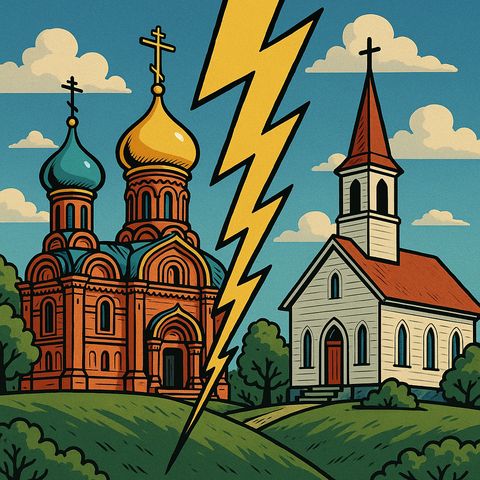
Timeline of Church Schisms, Gnostics, and Sects
The early movement of Jesus’s followers has evolved into thousands of distinct Christian groups, each claiming to represent authentic Christian teaching.
The story of these divisions reveals how theological disagreements, cultural differences, and political pressures have shaped Christianity’s development.
From the early debates between Jewish and Gentile believers to the emergence of Gnostic teachings, Christianity faced internal tensions from its beginning. These multiplied through the centuries as the faith spread across cultures and continents. Major splits – like the Great Schism between East and West, the Protestant Reformation, and the rise of independent churches in Africa and Asia – fundamentally reshaped the Christian landscape.
What we cover
This timeline covers the largest and most important schisms, but we also cover some of the smaller lesser-known ones if they are interesting or unusual — including groups labeled as sects and cults.
Timeline
AD 33
Death and Resurrection of Jesus
The foundational event of Christianity. Jesus’ followers, initially all Jewish, begin spreading his message while maintaining their Jewish practices.
AD 49-50
The Jerusalem Council
The first major potential schism is addressed when the council decides that non-Jewish converts don’t need to follow Jewish law. This prevents an early split between Jewish and Gentile Christians.
AD 50-150
Rise of Gnostic Christianity
Various Gnostic groups emerge, including the Valentinians, Basilideans, and Sethians. They teach that the material world is evil, created by a lesser god (demiurge), and that salvation comes through secret knowledge (gnosis).
AD 144
Marcion’s Formal Break
Marcion of Sinope establishes his own church network, rejecting the Old Testament and teaching that the God of Jesus is different from the God of the Hebrew Bible. His movement becomes one of the first organized schismatic groups.
AD 170-175
Valentinian Gnosticism Peaks
Valentinus, once nearly elected Bishop of Rome, creates one of the most sophisticated and influential Gnostic systems, teaching that the material world was created by a fallen divine being. His followers split into Eastern and Western schools.
AD 177
Montanism Emerges
Montanus and two female prophets, Prisca and Maximilla, start a movement emphasizing direct prophecy and strict asceticism. Though initially within the church, they’re eventually excluded, forming one of the first charismatic breakaway groups.
AD 180
First Documented Bishop of Rome
Eleutherius becomes the first historically-documented Bishop of Rome. While Catholic tradition lists earlier bishops back to Peter, Eleutherius is the first whose existence and role is confirmed by contemporary historical sources, particularly through the writings of Hegesippus and Irenaeus.
He serves during a time when Rome’s influence over other churches is growing, but the modern concept of papal supremacy hasn’t yet developed. His episcopate deals primarily with local issues and maintaining correspondence with other Christian communities.
AD 190
Theodotus of Byzantium Excommunicated
Theodotus of Byzantium, a leather worker and biblical scholar, is excommunicated by Pope Victor I for teaching that Jesus was born a mere man and only later inhabited by Christ at his baptism. This ‘adoptionist’ view becomes one of the first officially condemned beliefs about Jesus’ nature.
AD 225
Manichaeism Begins
Mani founds a new religion combining elements of Christianity, Buddhism, and Zoroastrianism. Though not strictly Christian, it attracts many Christians and becomes a significant rival to orthodox Christianity.
AD 280
Mandaeans Split
The Mandaeans, followers of John the Baptist, fully separate from mainstream Christianity. They believe Jesus was a false prophet who corrupted John’s teachings.
AD 318
Melitian Schism
Melitius of Lycopolis creates a separate church structure in Egypt, disagreeing with the Alexandria Patriarch over readmitting Christians who had renounced their faith during persecution.
AD 325
Arian Controversy and Council of Nicaea
Arius, a priest in Alexandria, teaches that Jesus was created by God and therefore not eternal. The First Council of Nicaea is called by Emperor Constantine to address this teaching. The council condemns Arianism and produces the Nicene Creed, but the controversy continues for decades, splitting the church into Arian and Nicene factions.
AD 431
Church of the East Separates
The Council of Ephesus leads to the first major geographical split in Christianity. The Church of the East (sometimes called ‘Nestorian’), centered in the Persian Empire, breaks communion with the Western churches over christological disputes.
AD 440-461
First Pope to Assert Universal Authority
Pope Leo I (also called ‘Leo the Great’) becomes the first Bishop of Rome to successfully assert and exercise papal supremacy over other churches. His famous ‘Tome of Leo’ at the Council of Chalcedon (451) is accepted as authoritative doctrine, and he successfully claims authority to overrule decisions of other patriarchs.
He also negotiates with Attila the Hun to spare Rome (452), enhancing papal political power. His pontificate marks the transition from the Bishop of Rome being ‘first among equals’ to claiming direct authority over all churches.
AD 451
Oriental Orthodox Churches Split
The Council of Chalcedon results in the separation of the Oriental Orthodox churches (including Coptic, Ethiopian, Armenian, and Syriac churches) from the Eastern Orthodox and Roman churches over disagreements about Christ’s nature.
AD 452
Coptic Church Establishes Independence
The Egyptian (Coptic) Church, under Pope Dioscorus, firmly establishes its independence from other churches. They maintain their own doctrine, liturgy, and papal succession in Alexandria, creating one of Christianity’s oldest continuous traditions.
AD 480
Ethiopian Church Develops Distinctly
Though connected to the Coptic Church, the Ethiopian Orthodox Tewahedo Church develops its unique traditions, maintaining ancient Jewish practices and developing its own canon of scripture including unique books like Enoch and Jubilees.
AD 632
Rise of Islam
While not strictly a Christian schism, Muhammad’s religion considers characters such as Abraham, Moses, and Jesus to be prophets, naming himself as the final prophet. Many Eastern Christian communities come under Islamic rule.
Sunni-Shia Split Begins
The dispute over Muhammad’s succession leads to warfare between followers of Ali (Shia) and supporters of the Umayyad caliphs (Sunni), reshaping the religious landscape where many Christians lived.
AD 726
Iconoclastic Controversy
Emperor Leo III bans religious images, causing a major rift between Eastern and Western Christianity. This becomes one of several issues leading to the eventual East-West Schism.
AD 850-900
Alawite Movement Emerges
The Alawites emerge as a distinct sect, combining elements of Shi'a Islam with Christian beliefs about divine incarnation. While technically classified as a branch of Shi'a Islam, they incorporate significant Christian elements, including celebrating Christmas and Easter, and performing a communion service with bread and wine.
AD 1054
The Great Schism
The Eastern Orthodox and Roman Catholic churches formally split. Key issues include papal authority, the filioque clause in the Nicene Creed, and differing liturgical practices.
AD 1061-1072
Antipope Honorius II vs Alexander II
A power struggle between Roman nobility and reformers leads to dual papal claims. Honorius II, backed by the German emperor, leads armies against Alexander II, who is supported by the Normans. The conflict ends with Alexander’s victory.
AD 1159-1178
Antipope Victor IV vs Alexander III
Four successive antipopes (Victor IV, Paschal III, Callistus III, and Innocent III) challenge Pope Alexander III, backed by Emperor Frederick Barbarossa. This leads to nearly 20 years of conflict, with armies fighting across Italy.
AD 1208-1244
Albigensian Movement
The Cathars (also called Albigensians) in southern France create a distinct dualistic religion with Christian elements. Their movement ends in the Albigensian Crusade, the first crusade directed against other Christians.
AD 1209
Waldensian Persecution Begins
The Waldensians, followers of Peter Waldo who advocated for lay preaching and biblical translation, are declared heretical. They become one of the first reform movements preceding the Protestant Reformation.
AD 1378-1417
The Western Schism
Also known as the ‘Great Western Schism’ or ‘Papal Schism,’ this period sees up to three rival popes simultaneously claiming authority. Urban VI rules from Rome, Clement VII from Avignon, and later Alexander V (followed by John XXIII) from Pisa. Each pope excommunicates the others and their followers, leading to military conflicts and deep divisions in Western Christianity.
AD 1380
Lollard Movement
John Wycliffe's followers, known as Lollards, form a distinct movement in England, advocating for Bible translation and church reform. They influence later Protestant thinking.
AD 1414-1418
Council of Constance Ends the Western Schism
The Council of Constance deposes all three rival popes and elects Martin V as the sole pope, finally ending the Western Schism. This establishes the principle that a general council has authority over the pope, though later popes would reject this idea.
AD 1517
Protestant Reformation Begins
Martin Luther posts his 95 Theses, officially beginning the Protestant Reformation. This leads to multiple new denominations forming over the next century.
AD 1521
Anabaptist Movement Emerges
The Radical Reformation begins, with groups rejecting both Catholic and mainstream Protestant teachings. They emphasize adult baptism and separation from state authority.
AD 1534
Church of England Breaks from Rome
Henry VIII establishes himself as Supreme Head of the Church of England, creating the Anglican Church. This split was initially more political than theological.
AD 1534-1535
Münster Rebellion
The Anabaptist kingdom of Münster represents a radical split, where followers believed they were establishing God’s kingdom on earth. Its violent end significantly impacted how Anabaptists were viewed and treated.
AD 1536
Calvinism Emerges
John Calvin establishes Reformed Protestantism in Geneva, leading to Presbyterian, Reformed, and Congregational churches worldwide.
AD 1558-1563
Rise of English Puritanism
Following Elizabeth I's Religious Settlement, a group within the Church of England begins pushing for more thorough reformation, stricter Biblical interpretation, and ‘purification’ of worship practices. These Puritans become increasingly dissatisfied with the Anglican Church’s compromise between Catholic and Protestant practices.
AD 1560
Scottish Reformation
John Knox leads the Scottish Reformation, establishing the Presbyterian Church of Scotland as distinct from both Catholic and Anglican churches, with unique governance structures.
AD 1565
Rise of the Polish Brethren
A group of Polish nobles and scholars establish the ‘Minor Reformed Church of Poland,’ later known as the Polish Brethren. They reject the Trinity doctrine and infant baptism, developing a significant body of anti-trinitarian literature that influences later Unitarian movements.
Their theological positions, including pacifism and the separation of church and state, were radical for their time but would later influence Enlightenment thinkers and modern liberal Christianity.
AD 1571
Dutch Reformed Church Established
The Dutch Reformed Church becomes officially organized at the Synod of Emden, though Reformed Protestant ideas had been spreading through the Netherlands since the 1520s. Under William of Orange's protection, it becomes the state church of the Dutch Republic.
The church adopts a distinct Reformed tradition that spreads globally through Dutch colonization and trade. This leads to Reformed churches in South Africa, North America, Indonesia, and beyond.
AD 1609
Baptist Church Emerges
John Smyth establishes the first Baptist church in Amsterdam, emphasizing believer’s baptism and congregational autonomy. This leads to both General (Arminian) and Particular (Calvinist) Baptist movements.
AD 1620
Pilgrim Separatists Leave for America
The most radical Puritans, known as Separatists, believe the Church of England is too corrupt to reform. The ‘Pilgrim’ group, after first fleeing to Holland, sails on the Mayflower to establish Plymouth Colony, creating the first successful Puritan settlement in North America.
AD 1658
Fall of the Polish Brethren
The Polish parliament votes to expel the Polish Brethren from the country, forcing most to flee to Transylvania, the Netherlands, and Prussia. Their ideas continue to influence religious thought in these regions, particularly the development of Unitarianism.
The expulsion marks one of the first instances of a religious group being legally banished from Poland, setting a concerning precedent for religious tolerance in Eastern Europe.
AD 1693
Amish Movement Begins
Jakob Ammann leads a conservative split from the Swiss Anabaptists, forming what becomes known as the Amish movement. They emphasize strict separation from the world, simple living, and the practice of ‘shunning.’
Quietism Controversy
Miguel de Molinos's mystical movement emphasizing passive contemplation is condemned by the Catholic Church, leading to divisions among contemplative orders and influencing later Protestant mysticism.
AD 1729
Methodist Movement Begins
John Wesley starts the Methodist movement within the Church of England, emphasizing personal holiness and social reform. It later becomes a separate denomination, spreading rapidly in America.
AD 1739
First Great Awakening
A revival movement sweeps through American colonies, leading to new divisions between ‘Old Light’ and ‘New Light’ congregations within existing denominations.
AD 1744
Moravian Church Established
Though tracing its roots to the 15th century Hussite movement, the Moravian Church is formally organized as a separate Protestant denomination, emphasizing missionary work and pietism.
AD 1790-1840
Second Great Awakening
The Second Great Awakening brings dramatic religious enthusiasm to America, leading to multiple new movements and denominations. Led by preachers like Charles Finney, it gives rise to the Restoration Movement, Adventism, and various Holiness groups. The revival emphasizes individual conversion, social reform, and the possibility of Christian perfection.
AD 1801
Cane Ridge Revival
This Kentucky revival marks the beginning of the American Restoration Movement, leading to the formation of the Churches of Christ, Christian Church (Disciples of Christ), and other restoration groups.
AD 1827
Plymouth Brethren Movement Begins; Dispensationalism Develops
The Plymouth Brethren movement begins in Dublin, Ireland, when a group of Christians including John Nelson Darby start meeting in homes to break bread together. By 1831, they establish a significant congregation in Plymouth, England, which gives the movement its name.
The group emphasizes a return to simple New Testament worship, rejection of formal clergy, and weekly communion. They become known for their detailed study of prophecy, with Darby developing ‘dispensationalism’ - a new way of interpreting Bible prophecy that would later heavily influence evangelical Christianity.
AD 1830
Mormon Church Founded
Joseph Smith establishes the Church of Jesus Christ of Latter-day Saints, claiming divine revelation and new scripture. This marks one of the most significant American religious movements.
AD 1832
Stone-Campbell Restoration Movement Forms
On the American frontier, the Stone-Campbell Movement begins.
It seeks to restore primitive Christianity, rejecting denominational creeds and emphasizing biblical authority, and becomes a significant force in American Protestantism.
The group coins several famous slogans you may have heard before, including:
- ‘Where the Scriptures speak, we speak; where the Scriptures are silent, we are silent.’
- ‘In essentials, unity; in opinions, liberty; in all things love.’
- ‘No creed but Christ, no book but the Bible, no law but love, no name but the divine.’
AD 1843
Free Church of Scotland Split
The ‘Disruption of 1843’ sees about one-third of the Church of Scotland’s ministers leave to form the Free Church over issues of church-state relations and patronage.
The Millerite Movement
William Miller predicts Christ’s return between March 1843 and March 1844, attracting thousands of followers. When this fails, they recalculate to October 22, 1844. This second failure becomes known as the ‘Great Disappointment’.
AD 1844
Seventh-day Adventist Movement Begins
Following the ‘Great Disappointment’ in the Millerite movement, Ellen G. White and others form the Seventh-day Adventist Church, emphasizing Saturday worship and end-time prophecy.
Mormon Succession Crisis
After Joseph Smith’s death, the Mormon movement splits. Brigham Young leads the largest group to Utah (becoming the LDS Church), while Emma Smith and others form the Reorganized Church of Jesus Christ of Latter Day Saints (now Community of Christ), rejecting polygamy and other doctrines.
The Báb
An Iranian man called Alí Muḥammad declares that he was the promised one of Islam. He adopts the title, The Báb, meaning ‘the gate’, and founds Bábism. He says that he will prepare the way for another messenger of God to come in the future (in a way likely referencing how John the Baptist prepared the way for Jesus). After The Báb’s death, over 25 men claimed to be that promised messenger.
Though emerging from an Islamic context, Bábism incorporates elements of Christianity, Judaism, and other religions, recognizing Jesus, Muhammad, Buddha, and other religious figures as messengers.
AD 1848
Plymouth Brethren Division
The Plymouth Brethren movement divided into two main branches: the ‘Exclusive Brethren’ and the ‘Open Brethren’.
This division occurred when John Nelson Darby broke fellowship with the Bethesda Chapel in Bristol over doctrinal disputes, specifically regarding whether to welcome believers who were associating with a teacher who held doctrine he didn’t agree with.
Christadelphian Movement Begins
John Thomas establishes the Christadelphians after breaking from the Restorationist movement.
Initially calling his followers ‘Brethren in Christ,’ they later adopt ‘Christadelphian’ (meaning ‘Brothers in Christ’) during the American Civil War to register as conscientious objectors.
They reject mainstream Christian doctrines like the Trinity, immortal soul, and a literal devil.
AD 1850-1878
Old Order Amish Division
The Amish community experiences major divisions between progressive ‘New Order’ and traditional ‘Old Order’ groups over issues like technology use, Sunday schools, and evangelistic practices. This leads to lasting distinctions between different Amish communities.
AD 1863
The Bahá'u’lláh
An Iranian man named Mírzá Ḥusayn-ʻAlí Núrí is one of several men declaring himself to be the promised messenger of God whom The Báb had prophesied.
His followers gave him the title Bahá'u’lláh, meaning ‘the glory of God’. They then began to spread his teachings, and the Bahá'í Faith is born. Today it has about 8 million adherents.
Though, like Bábism, it arose out of an Iranian and Islamic context, it too incorporates elements of Christianity, Judaism, and other religions, recognizing Jesus and other religious figures as messengers from God. Bahá'u’lláh taught that he was the most recent of these messengers.
AD 1870
Old Catholic Church Forms
The First Vatican Council's declaration of papal infallibility leads to the formation of the Old Catholic Church, particularly strong in Germany and Switzerland, rejecting papal supremacy while maintaining Catholic traditions.
AD 1879
Christian Science Established
Mary Baker Eddy founds the Church of Christ, Scientist, teaching that illness is an illusion that can be overcome through prayer and spiritual understanding.
Bible Student Movement Begins
Charles Taze Russell starts publishing Zion’s Watch Tower, beginning what would become the Bible Student movement and later Jehovah’s Witnesses.
AD 1881
Salvation Army Organized
William Booth reorganizes his Christian Mission into the Salvation Army, combining evangelical Christianity with social reform and charitable work.
AD 1890
African Independent Churches Begin
The first African-initiated church movements emerge across the continent, primarily in response to European missionary control.
Examples include the Tembu Church in South Africa, founded by Nehemiah Tile as a protest against foreign authority, and the Ebenezer Baptist Church in Nigeria, formed by Baptist secessionists in opposition to American missionary leadership.
These early groups often sought to establish African-led churches while initially retaining much of the doctrine and practice of their parent missions.
AD 1901
Pentecostal Movement Begins
Charles Parham’s Bethel Bible School in Topeka, Kansas experiences speaking in tongues, marking the beginning of modern Pentecostalism before the more famous Azusa Street Revival.
AD 1906
Azusa Street Revival
The Pentecostal movement emerges from the Azusa Street Revival in Los Angeles, led by William J. Seymour, leading to numerous new denominations emphasizing spiritual gifts and speaking in tongues.
AD 1914
Assemblies of God Forms
The Assemblies of God organizes as a Pentecostal denomination, becoming one of the fastest-growing Christian movements globally.
AD 1915-1919
Seventh-day Adventist Reform Movement
A major split occurs during World War I over military service when European Adventist leaders encourage members to serve in the military. German Adventists who refuse military service are disfellowshipped. They form the Reform Movement.
AD 1921
Zion Christian Church Forms
South Africa’s largest African Independent Church is founded by Engenas Lekganyane, combining Christian beliefs with traditional African practices. It becomes one of the largest Christian denominations in southern Africa.
AD 1925
Scopes Trial Impact
The Scopes ‘Monkey’ Trial leads to a significant split between fundamentalist and modernist Protestants, affecting multiple denominations and leading to new theological divisions.
Bible Students Split
The Bible Student movement largely collapses and splits into numerous rival groups after their new leader, J.F. Rutherford, makes a failed prediction that the world would end in 1925. Those loyal to him eventually become known as Jehovah’s Witnesses.
AD 1934
Herbert Armstrong Begins Radio Ministry
Herbert W. Armstrong starts The Radio Church of God, later renamed the Worldwide Church of God, combining elements of British Israelism (the belief that the British are the true Israelites), Seventh-day Adventist teachings, and unique prophetic interpretations for the end of the world.
AD 1952
Kimbanguist Church Recognized
The church founded by Simon Kimbangu in Congo becomes officially recognized. It began as a protest against colonial Christianity and combines Christian teaching with African cultural elements. It’s now one of the largest independent churches in Africa.
AD 1954
Unification Church Founded
Sun Myung Moon establishes the Holy Spirit Association for the Unification of World Christianity (commonly known as the ‘Moonies’) in South Korea. The movement combines elements of Christianity with Korean folk religion and Moon’s personal revelations, claiming he is the second coming of Christ.
AD 1957
Chinese Patriotic Catholic Association
The Chinese Communist Party establishes the Chinese Patriotic Catholic Association, breaking ties with Rome and creating a state-controlled Catholic Church. This forces Chinese Catholics to choose between the state-approved church and underground congregations loyal to Rome.
AD 1960s
Liberation Theology Splits
In Latin America, the rise of Liberation Theology creates divisions within Catholic and Protestant churches. Some priests and pastors embrace revolutionary politics and social activism, while others maintain traditional positions, leading to splits in many congregations.
AD 1963
Iglesia ni Cristo Expansion
Though founded in 1914, this Filipino church experiences massive growth in the 1960s. They teach that Felix Manalo was God’s last messenger and reject the Trinity. Today they’re one of the most influential religious groups in the Philippines, with significant political power.
AD 1970s
Brazilian Pentecostal Explosion
Brazil experiences a massive growth in independent Pentecostal churches, including the Universal Church of the Kingdom of God, leading to significant splits from both Catholic and mainline Protestant churches. These new churches often combine prosperity theology with Brazilian cultural elements.
Jehovah’s Witnesses Crisis and Growth
Jehovah’s Witnesses experience both rapid growth and significant upheaval around their prediction that Armageddon would arrive in 1975. When the prediction fails, they lose many members, but paradoxically see increased growth in developing nations during the late 1970s.
AD 1980
Three-Self Patriotic Movement Strengthened
China’s government consolidates control over Protestant churches through the Three-Self Patriotic Movement and China Christian Council, creating a division between state-approved and underground ‘house churches.’ This leads to lasting splits in Chinese Christianity between official and unofficial congregations.
AD 1986
Herbert Armstrong’s Death
Following Herbert Armstrong’s death, the Worldwide Church of God begins doctrinal reforms, leading to major splits and a collapse in membership. It is now known as the Grace Communion International.
AD 1993
Eritrean Orthodox Church
Initially part of the Ethiopian Orthodox Church, the Eritrean Orthodox Church had always had a distinct identity, but became fully independent in this year, after Eritrea gained independence from Ethiopia.
AD 1994
True Russian Orthodox Church
A major split occurs in Russian Orthodoxy when the True Russian Orthodox Church (also called ‘Catacomb Church’) separates from the Moscow Patriarchate, claiming the official church had become too close to the state.
AD 2018-2019
Ukrainian Orthodox Church Gains Independence
The Orthodox Church's global leader in Constantinople (modern Istanbul) recognizes Ukraine’s right to have its own independent Orthodox Church of Ukraine. The Russian Orthodox Church responds by cutting ties with Constantinople, creating the biggest split in Orthodox Christianity in hundreds of years. After Russia invades Ukraine in 2022, even more Ukrainian churches break away from Russian control.
AD 2020
Anglican Communion Crisis
A major split develops in the global Anglican Communion over acceptance of homosexuality, particularly after the U.S. Episcopal Church consecrates Gene Robinson as the first openly gay bishop in 2003. By 2020, most African Anglican churches (representing the majority of global Anglicans) have broken or impaired communion with liberal Western Anglican churches.
Timelines: Bible History
-
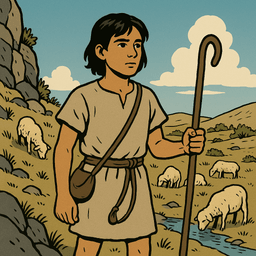
-
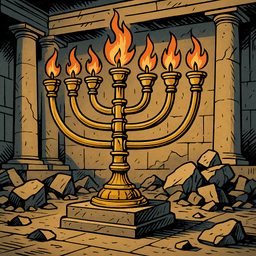
-
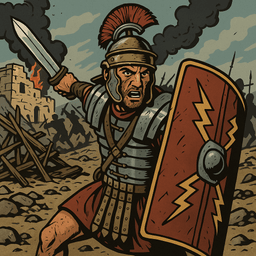
-

-
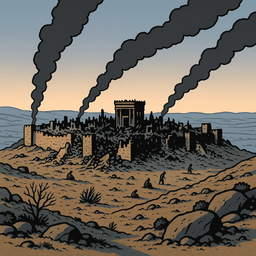
Timelines: Doctrines
-
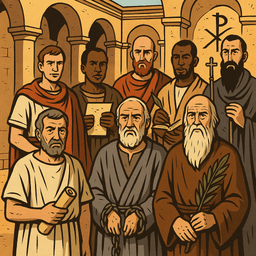
-
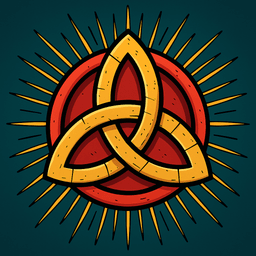
-
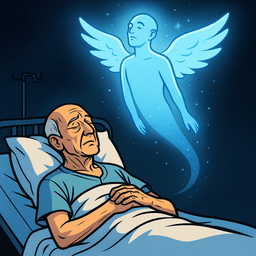
-
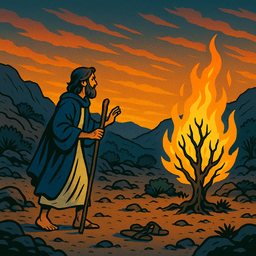
Timelines: Miscellaneous
-
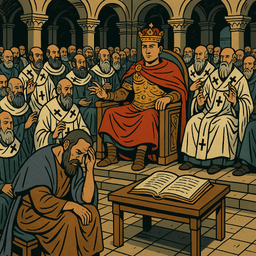
-
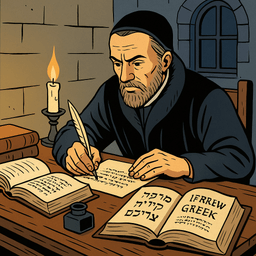
-
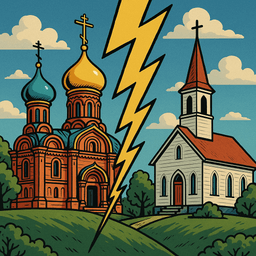
-
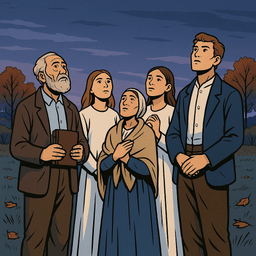
Also see our Articles index and our About section.